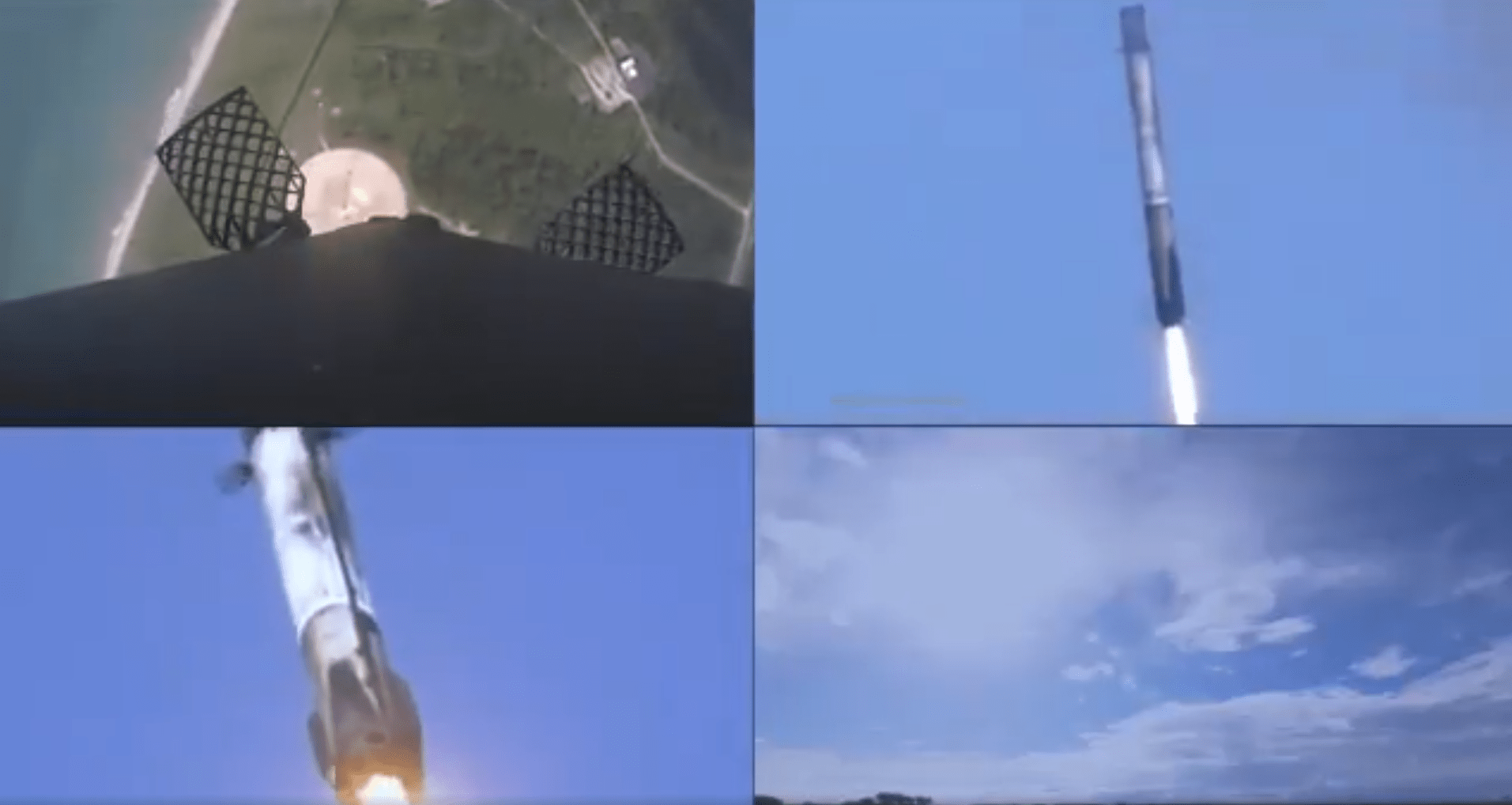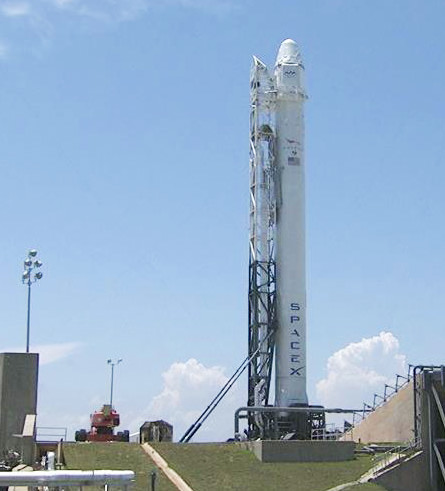You might remember the story of the two astronauts on board the International Space Station that went for an 8 day mission, that was back in June 2024! Butch Wilmore and Suni Williams have been stranded there ever since but their ride home has just arrived at the ISS. A SpaceX Crew Dragon capsule carrying Nick Hague and Aleksandr Gorbunov has just docked so that the two can join the Expedition 72 crew already on board. There are now 11 people on boar the ISS but the Crew-9 capsule will return in February carrying Wilmore and Williams finally back home.
Continue reading “Stranded Astronauts To Get Their Ride Home”Check Out This Super-Cool Quad Video of the Falcon Re-Entry. Two Sonic Booms!
Elon Musk has posted a four-panel video of the Falcon re-entry on his Twitter feed and it’s driving even jaded space-watchers into a frenzy.
Continue reading “Check Out This Super-Cool Quad Video of the Falcon Re-Entry. Two Sonic Booms!”SpaceX Dragon Carrying New Inflatable Room Captured and Mated to Space Station
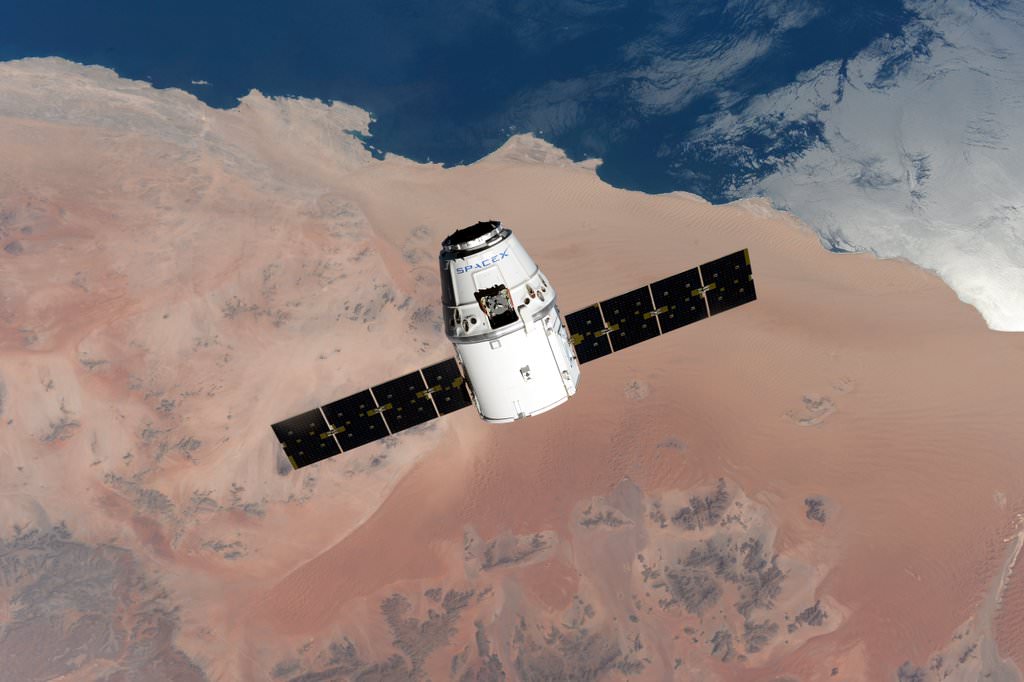

A SpaceX commercial cargo freighter jam packed with more than three and a half tons of research experiments, essential crew supplies and a new experimental inflatable habitat reached the International Space Station (ISS) and the gleeful multinational crew of six astronauts and cosmonauts on Sunday, April 10.
The U.S. SpaceX Dragon cargo craft arrived at the ISS following a carefully choreographed orbital chase inaugurated by a spectacular launch atop an upgraded SpaceX Falcon 9 rocket from Cape Canaveral Air Force Station, Florida, on Friday, April 8.
As the massive Earth orbiting outpost was soaring some 250 miles (400 kilometers) over the Pacific Ocean west of Hawaii, British astronaut Tim Peake of ESA (European Space Agency), with the able assistance of NASA’s Jeff Williams, successfully captured the SpaceX Dragon CRS-8 resupply ship with the station’s Canadian-built robotic arm.
Peake painstakingly maneuvered and deftly grappled Dragon with the snares at the terminus of the 57 foot long (19 meter long) Canadarm2 at 7:23 a.m. EDT for installation on the million pound orbital lab complex.
“Looks like we’ve caught a Dragon,” Peake radioed back to Mission Control. The orbital operational was webcast live on NASA TV.
“Awesome capture by crewmate Tim Peake,” said fellow NASA crewmate Tim Kopra who snapped a series of breathtaking images of the approach and capture.
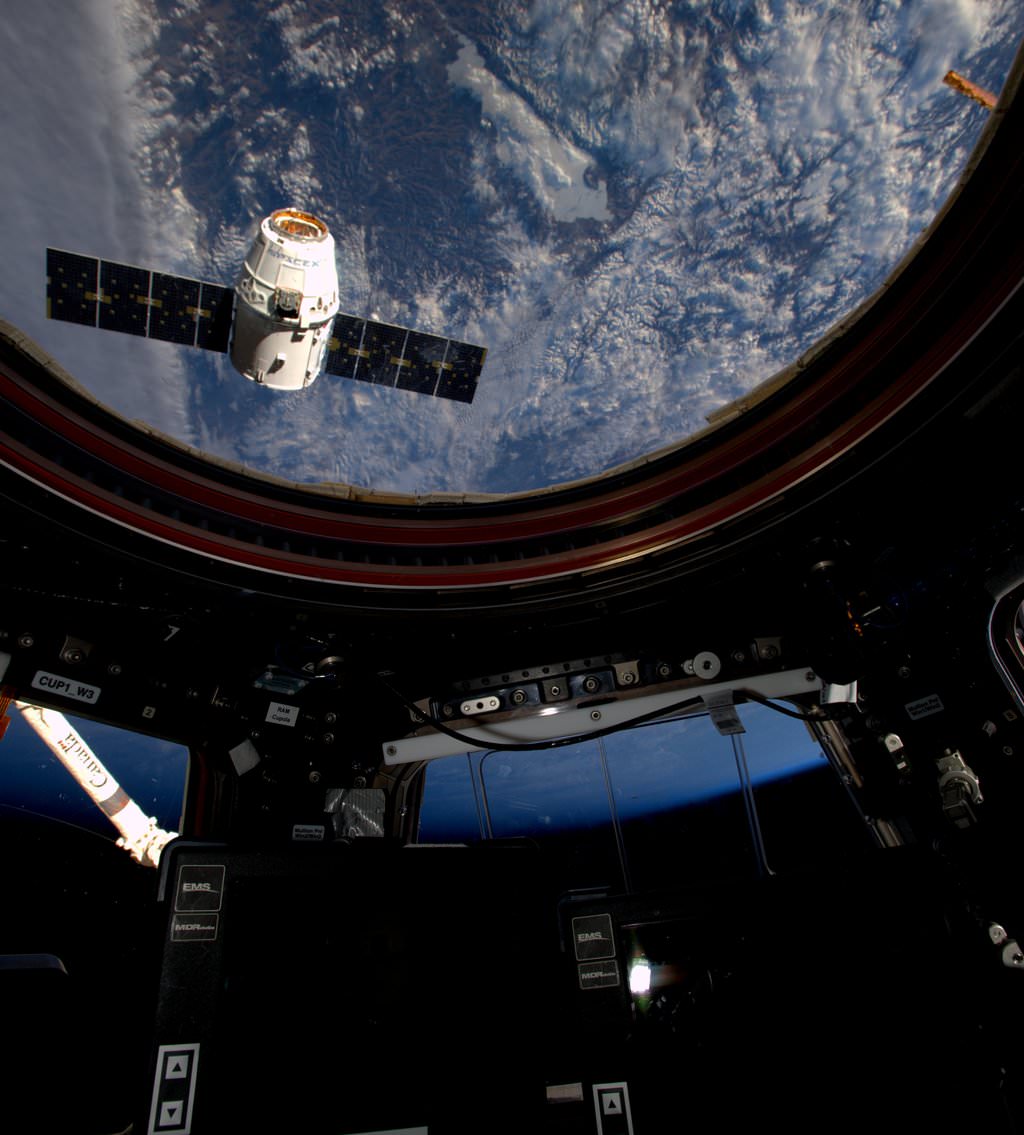
Ground controllers at Mission Control in Houston then issued commands to carefully guide the robotic arm holding the Dragon freighter to the Earth-facing port on the bottom side of the Harmony module for its month long stay at the space station.
The ship was finally bolted into place at 9:57 a.m. EDT as the station flew 250 miles (400 km) over southern Algeria.
Watch this NASA video compiling all the highlights of the arrival and mating of the SpaceX Dragon on April 10, 2016 carrying the BEAM habitat module and 3.5 tons of science and supplies. Credit: NASA
Expedition 47 crew members Jeff Williams and Tim Kopra of NASA, Tim Peake of ESA (European Space Agency) and cosmonauts Yuri Malenchenko, Alexey Ovchinin and Oleg Skripochka of Roscosmos are currently living aboard the orbiting laboratory.
In a historic first, the arrival of the SpaceX Dragon cargo spacecraft marks the first time that two American cargo ships are simultaneously docked to the ISS. The Orbital ATK Cygnus CRS-6 cargo freighter only just arrived on March 26 and is now installed at a neighboring docking port on the Unity module.
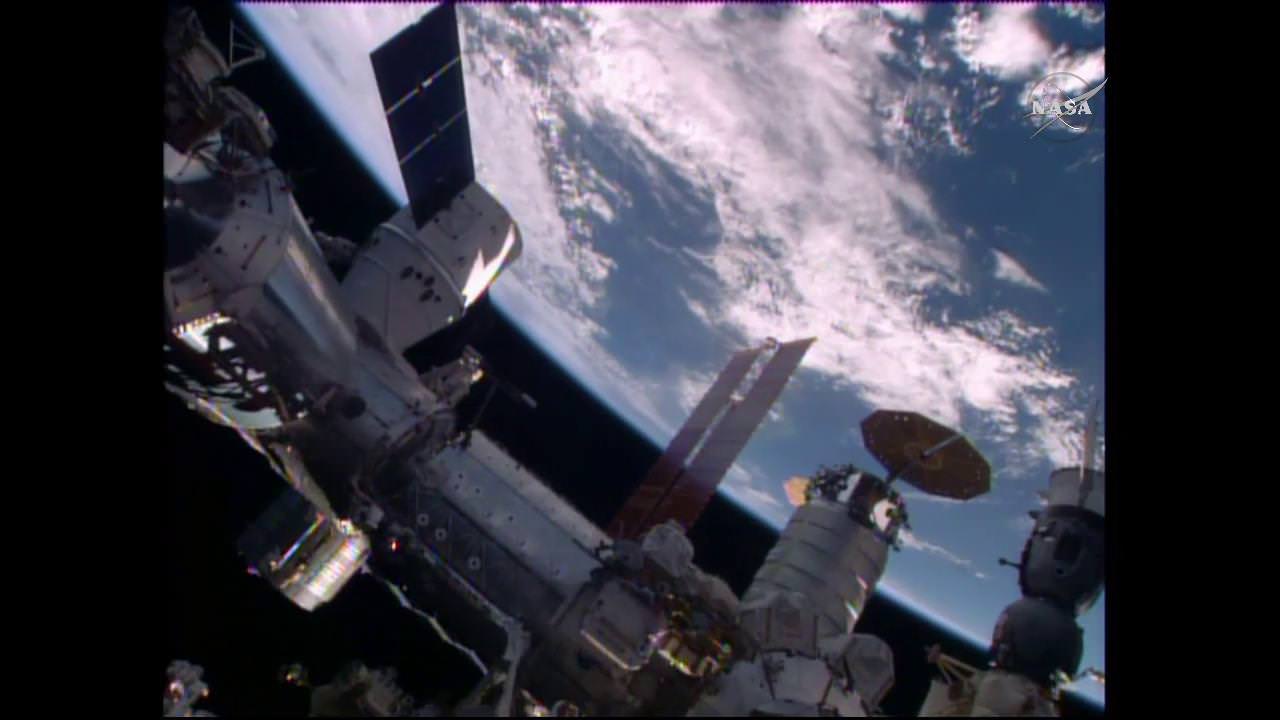
Cygnus was launched to the ISS atop a ULA Atlas V barely two weeks earlier on March 22 – as I reported on and witnessed from the Kennedy Space Center press site.
“With the arrival of Dragon, the space station ties the record for most vehicles on station at one time – six,” say NASA officials.
The Dragon spacecraft is delivering almost 7,000 pounds of cargo, including the Bigelow Expandable Activity Module (BEAM), to the orbital laboratory which was carried to orbit inside the Dragon’s unpressurized truck section.
BEAM is a prototype inflatable habitat that the crew will soon pluck from the Dragon’s truck with the robotic arm for installation on a side port of the Harmony module.
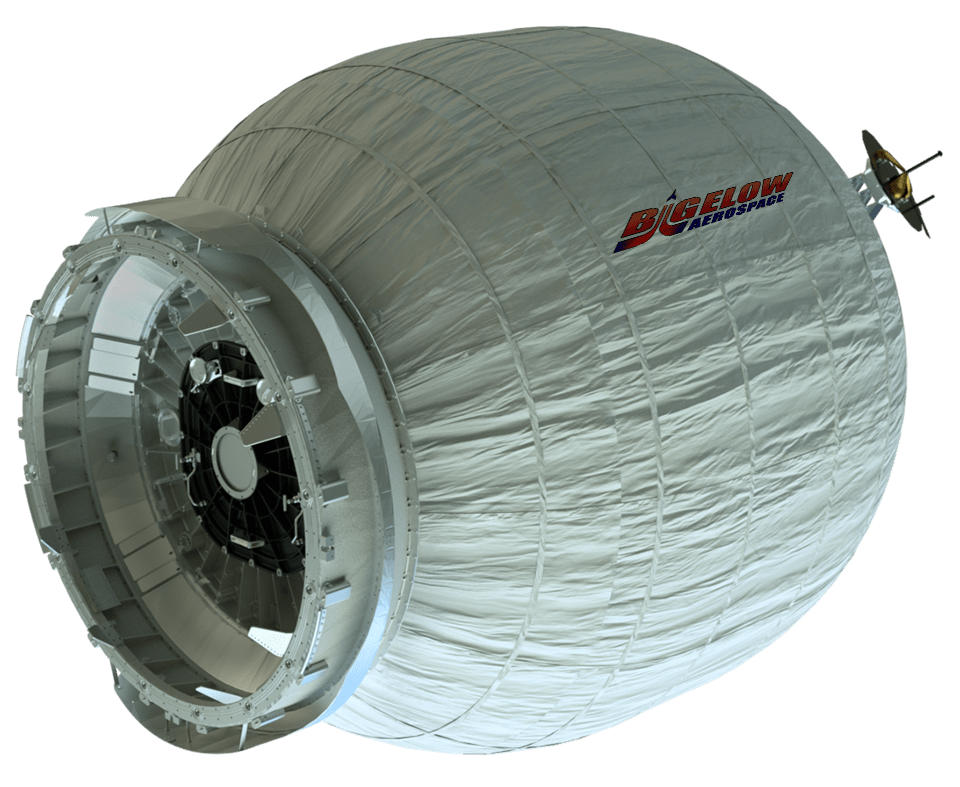
CRS-8 counts as the company’s eighth flight to deliver supplies, science experiments and technology demonstrations to the ISS for the crews of Expeditions 47 and 48 to support dozens of the approximately 250 science and research investigations in progress.
Friday’s launch marks the first for a Dragon since the catastrophic failure of the SpaceX Falcon 9 last June.
Dragon will remain at the station until it returns for Earth on May 11 for a parachute assisted splash down in the Pacific Ocean off the west coast of Baja California. It will be packed with almost 3,500 pounds off cargo and numerous science samples, including those biological samples collected by 1 year ISS crew member Scott Kelly, for return to investigators, hardware and spacewalking tools, some additional broken hardware for repair and some items of trash for disposal.
Video caption: 5 camera views of the SpaceX Falcon 9 launch of the CRS-8 mission to the ISS on 04/08/2016. Credit: Jeff Seibert/AmericaSpace
Stay tuned here for Ken’s continuing Earth and planetary science and human spaceflight news.
………….
Learn more about SpaceX, NASA Mars rovers, Orion, SLS, ISS, Orbital ATK, ULA, Boeing, Space Taxis, NASA missions and more at Ken’s upcoming outreach events:
Apr 12: Hosting Dr. Jim Green, NASA, Director Planetary Science, for a Planetary sciences talk about “Ceres, Pluto and Planet X” at Princeton University; 7:30 PM, Amateur Astronomers Assoc of Princeton, Peyton Hall, Princeton, NJ – http://www.princetonastronomy.org/
Apr 17: “NASA and the Road to Mars Human Spaceflight programs”- 1:30 PM at Washington Crossing State Park, Nature Center, Titusville, NJ – http://www.state.nj.us/dep/parksandforests/parks/washcros.html
SpaceX Aims for Friday Sunset Launch After Boats and Winds Delay Falcon 9 Liftoff and Landing Attempt – Live Webcast
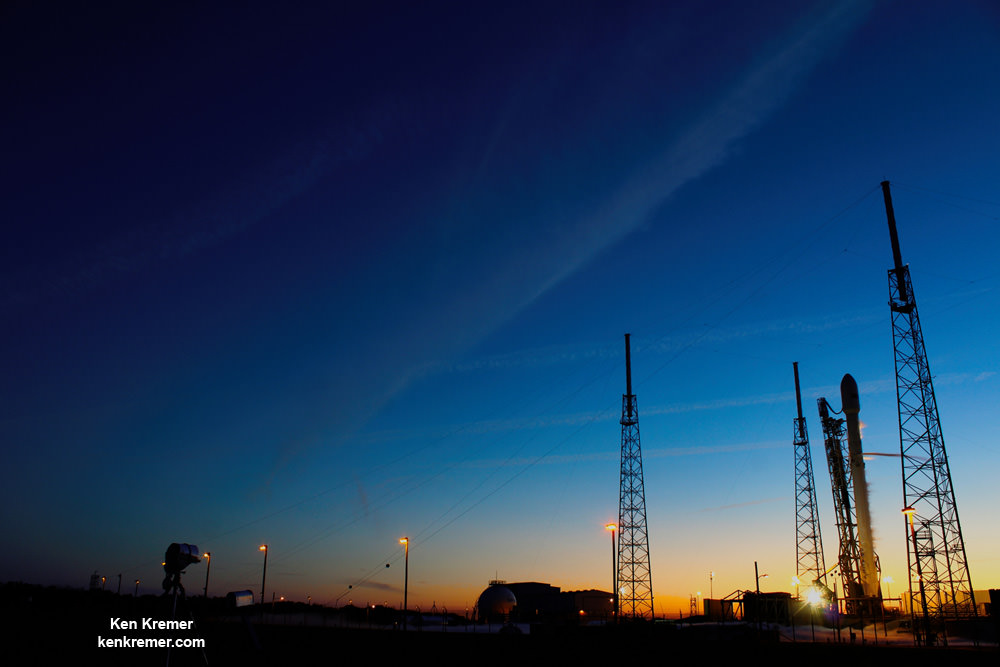

CAPE CANAVERAL AIR FORCE STATION, FL – Alas SpaceX is now targeting Friday March 4 for the 5th attempt to launch their upgraded Falcon 9 carrying the powerful SES-9 commercial telecommunications satellite, following another pair of launch scrubs earlier this week due to errant boats and strong winds aloft.
“We’re now targeting Friday, March 4 at 6:35 pm ET for launch of SES-9,” said SpaceX spokesman Phil Larson. Sunset is at 6:25 pm. Continue reading “SpaceX Aims for Friday Sunset Launch After Boats and Winds Delay Falcon 9 Liftoff and Landing Attempt – Live Webcast”
SpaceX Sets Dec. 20 For ‘Return to Flight’ Launch and Historic Rocket Ground Landing Recovery Attempt – Watch Live

SpaceX CEO Elon Musk announced today (Dec. 19) that his company plans to launch an upgraded version of its Falcon 9 rocket on Sunday night, Dec. 20, from Cape Canaveral, Florida – for the first time since it failed in flight six months ago on a mission for NASA to the space station – after successfully completing a crucial test of the rockets engines late Friday night.
Furthermore, SpaceX confirmed it will conduct a historic first ever attempt to recover the commercial rocket’s first stage by a soft landing on the ground at a special SpaceX site called Landing Zone 1 on the Cape’s Air Force Station. Continue reading “SpaceX Sets Dec. 20 For ‘Return to Flight’ Launch and Historic Rocket Ground Landing Recovery Attempt – Watch Live”
Weekly Space Hangout – February 27, 2015: In Memory of Leonard Nimoy
Host: Fraser Cain (@fcain)
Guests:
Morgan Rehnberg (cosmicchatter.org / @MorganRehnberg )
Continue reading “Weekly Space Hangout – February 27, 2015: In Memory of Leonard Nimoy”
A History of Launch Failures: “Not Because They are Easy, but Because They are Hard”

Over the 50-plus years since President John F. Kennedy’s Rice University speech, spaceflight has proven to be hard. It doesn’t take much to wreck a good day to fly.
Befitting a Halloween story, rocket launches, orbital insertions, and landings are what make for sleepless nights. These make-or-break events of space missions can be things that go bump in the night: sometimes you get second chances and sometimes not. Here’s a look at some of the past mission failures that occurred at launch. Consider this a first installment in an ongoing series of articles – “Not Because They Are Easy.”

The evening of October 28, 2014, was another of those hard moments in the quest to explore and expand humanity’s presence in space. Ten years ago, Orbital Sciences Corporation sought an engine to fit performance requirements for a new launch vehicle. Their choice was a Soviet-era liquid fuel engine, one considered cost-effective, meeting requirements, and proving good margins for performance and safety. The failure of the Antares rocket this week could be due to a flaw in the AJ-26 or it could be from a myriad of other rocket parts. Was it decisions inside NASA that cancelled or delayed engine development programs and led OSC and Lockheed-Martin to choose “made in Russia” rather than America?
Here are other unmanned launch failures of the past 25 years:
Falcon 1, Flight 2, March 21, 2007. Fairings are hard. There are fairings that surround the upper stage engines and a fairing covering payloads. Fairings must not only separate but also not cause collateral damage. The second flight of the Falcon 1 is an example of a 1st stage separation and fairing that swiped the second stage nozzle. Later, overcompensation by the control system traceable to the staging led to loss of attitude control; however, the launch achieved most of its goals and the mission was considered a success. (View: 3:35)
Proton M Launch, Baikonur Aerodrome, July 2, 2013. The Proton M is the Russian Space program’s workhorse for unmanned payloads. On this day, the Navigation, Guidance, and Control System failed moments after launch. Angular velocity sensors of the guidance control system were installed backwards. Fortunately, the Proton M veered away from its launch pad sparing it damage.
Ariane V Maiden Flight, June 4, 1996. The Ariane V was carrying an ambitious ESA mission called Cluster – a set of four satellites to fly in tetrahedral formation to study dynamic phenomena in the Earth’s magnetosphere. The ESA launch vehicle reused flight software from the successful Ariane IV. Due to differences in the flight path of the Ariane V, data processing led to a data overflow – a 64 floating point variable overflowing a 16 bit integer. The fault remained undetected and flight control reacted in error. The vehicle veered off-course, the structure was stressed and disintegrated 37 seconds into flight. Fallout from the explosion caused scientists and engineers to don protective gas masks. (View: 0:50)
Delta II, January 17, 1997. The Delta II is one of the most successful rockets in the history of space flight, but not on this day. Varied configurations change up the number of solid rocket motors strapped to the first stage. The US Air Force satellite GPS IIR-1 was to be lifted to Earth orbit, but a Castor 4A solid rocket booster failed seconds after launch. A hairline fracture in the rocket casing was the fault. Both unspent liquid and solid fuel rained down on the Cape, destroying launch equipment, buildings, and even parked automobiles. This is one of the most well documented launch failures in history.
Compilation of Early Launch Failures. Beginning with several of the early failures of Von Braun’s V2, this video compiles many failures over a 70 year period. The early US space program endured multiple launch failures as they worked at a breakneck speed to catch up with the Soviets after Sputnik. NASA did not yet exist. The Air Force and Army had competing designs, and it was the Army with the German rocket scientists, including Von Braun, that launched the Juno 1 rocket carrying Explorer 1 on January 31, 1958.
One must always realize that while spectacular to launch viewers, a rocket launch has involved years of development, lessons learned, and multiple revisions. The payloads carried involve many hundreds of thousands of work-hours. Launch vehicle and payloads become quite personal. NASA and ESA have offered grief counseling to their engineers after failures.
“We choose to go to the moon in this decade and do the other things, not because they are easy, but because they are hard, because that goal will serve to organize and measure the best of our energies and skills, because that challenge is one that we are willing to accept, one we are unwilling to postpone, and one which we intend to win, and the others, too.”
What Will Happen During Tomorrow’s SpaceX Launch:
With less than a day left before SpaceX’s historic launch of the first commercial vehicle to the ISS, slated for 4:55 am EDT on Saturday, May 19, here’s a video of what will happen once the Falcon lifts off.
(Part of me really wishes that they’ll be pumping out some dramatic music when it launches!)
[/caption]
The video, created by NASA in 2011, shows the events that will take place from the initial launch at SpaceX’s Cape Canaveral facility to the release of the Dragon capsule and its eventual docking with the ISS on Tuesday, as well as its return to Earth (yes, it’s reusable!)
The Dragon capsule contains 674 lbs (305 kg) of food and supplies for the Expedition 31 crew.
In addition to what’s aboard Dragon, the Falcon rocket will also be taking the cremated remains of 308 people — including Star Trek actor James Doohan and NASA astronaut Gordon Cooper — into space, via a private company called Celestis.
Read more about tomorrow’s launch here. And to watch the event live, stay tuned to SpaceX.com.
Video: NASA
Update 5/19: As it turned out, none of the above occurred. Instead, this happened. Maybe better luck on Tuesday!
SpaceX Delays Upcoming 1st Dragon Launch to ISS
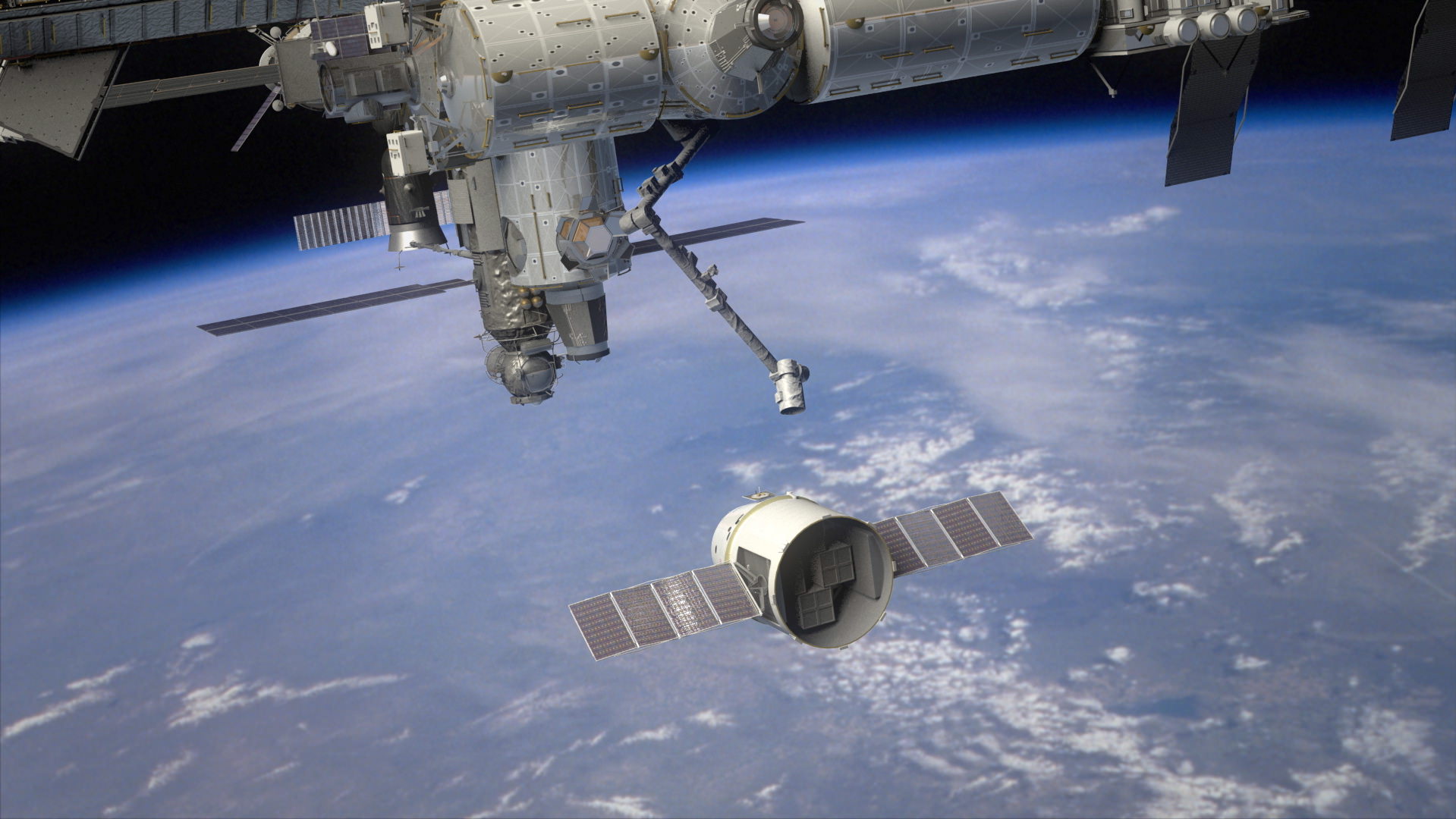
[/caption]
The first test launch of a commercially built spacecraft to the International Space Station has been delayed by its builder, Space Exploration Technologies or SpaceX, in order to carry out additional testing to ensure that the vehicle is fully ready for the high stakes Earth orbital mission.
SpaceX and NASA had been working towards a Feb. 7 launch date of the company’s Dragon spacecraft and announced the postponement in a statement today (Jan. 16).
A new target launch date has not been set and it is not known whether the delay amounts to a few days, weeks or more. The critical test flight has already been rescheduled several times and was originally planned for 2011.
The unmanned Dragon is a privately developed cargo vessel constructed by SpaceX under a $1.6 Billion contract with NASA to deliver supplies to the ISS and partially replace the transport to orbit capabilities that were fully lost following the retirement of the Space Shuttle in 2011.
“In preparation for the upcoming launch, SpaceX continues to conduct extensive testing and analysis, said SpaceX spokeswoman Kirstin Grantham in the statement.
“We [SpaceX] believe that there are a few areas that will benefit from additional work and will optimize the safety and success of this mission.”
“We are now working with NASA to establish a new target launch date, but note that we will continue to test and review data. We will launch when the vehicle is ready,” said Grantham.
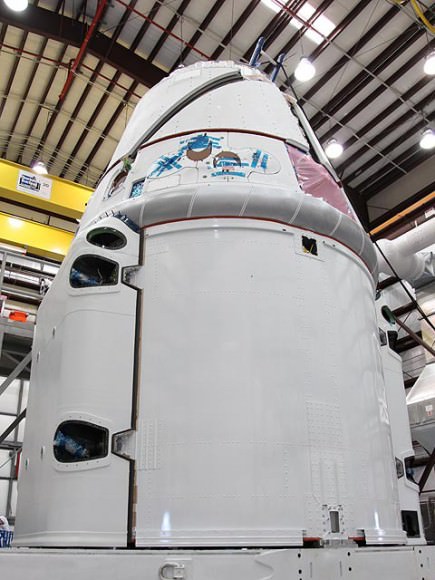
Dragon’s purpose is to ship food, water, provisions, equipment and science experiments to the ISS.
The demonstration flight – dubbed COTS 2/3 – will be the premiere test flight in NASA’s new strategy to resupply the ISS with privately developed rockets and cargo carriers under the Commercial Orbital Transportation Services (COTS) initiative.
The Dragon will blast off atop a Falcon 9 booster rocket also built by SpaceX and, if all goes well, conduct the first ever rendezvous and docking of a privately built spacecraft with the 1 million pound orbiting outpost.
After closely approaching the ISS, the crew will grapple Dragon with the station’s robotic arm and berth it to the Earth-facing port of the Harmony node.
“We’re very excited about it,” said ISS Commander Dan Burbank in a recent televised interview from space.
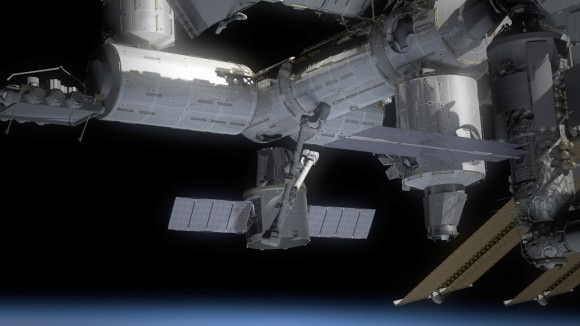
Since the demonstration mission also involves many other first time milestones for the Dragon such as the first flight with integrated solar arrays and the first ISS rendezvous, extra special care and extensive preparatory activities are prudent and absolutely mandatory.
NASA’s international partners, including Russia, must be consulted and agree that all engineering and safety requirements, issues and questions related to the docking by new space vehicles such as Dragon have been fully addressed and answered.
William Gerstenmaier, NASA’s associate administrator for the Human Exploration and Operations Mission Directorate recently stated that the launch date depends on completing all the work necessary to ensure safety and success, “There is still a significant amount of critical work to be completed before launch, but the teams have a sound plan to complete it.”
“As with all launches, we will adjust the launch date as needed to gain sufficient understanding of test and analysis results to ensure safety and mission success.”
“A successful mission will open up a new era in commercial cargo delivery to the international orbiting laboratory,” said Gerstenmaier.
SpaceX is also working on a modified version of the spacecraft, dubbed DragonRider, that could launch astronaut crews to the ISS in perhaps 3 to 5 years depending on the amount of NASA funding available, says SpaceX CEO and founder Elon Musk
Read Ken’s recent features about the ISS and SpaceX/Dragon here:
Dazzling Photos of the International Space Station Crossing the Moon!
Solar Powered Dragon gets Wings for Station Soar
Absolutely Spectacular Photos of Comet Lovejoy from the Space Station
NASA announces Feb. 7 launch for 1st SpaceX Docking to ISS


